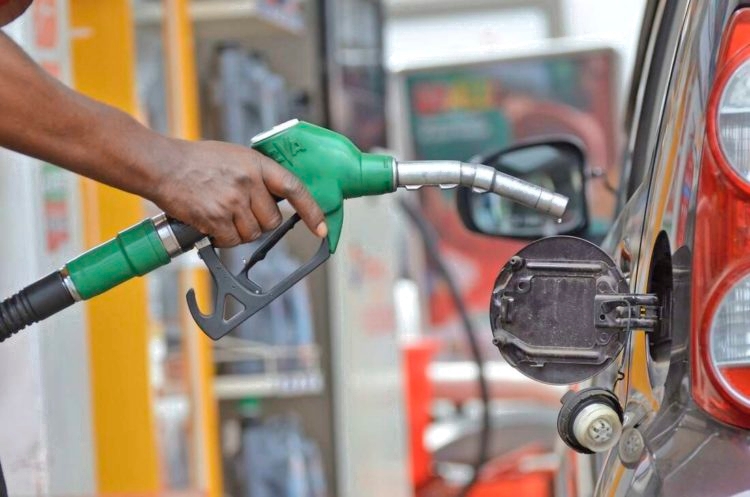Is Dar’s newest landmark a bridge to nowhere?

An aerial view of the Tanzanite Bridge in Dar es Salaam. PHOTO | FILE
What you need to know:
- As an iconic structure, Tanzanite Bridge is a very welcome addition to Dar’s ever-increasing collection. However, aesthetics aside, the rationale for its development appears to be a bit wanting in logic
On February 1, 2022, another icon in Dar es Salaam City’s landscape was unveiled – the 1.03km Tanzanite Bridge with 5.2km of roads connecting it with Barack Obama Drive, Kenyatta Drive and Toure Drive.
The bridge is a work of beauty, merging contemporary engineering with superb aesthetics. It is built over the ocean using the cable-stayed design, closely following in the footsteps of its more illustrious cousins such as the Millau Viaduct in France, which is the tallest bridge in the world.
From the deck, visitors are accorded stunning vistas of the Indian Ocean and Dar’s skyline. This has made it quite popular with Dar residents, trending on social networks even before its official opening.
For the same reasons, it is expected to be popular with tourists too, who may wish to pass through and take memorable photos of their stay in the city. Being on East Africa’s longest bridge will by no means diminish their experience.
The bridge connects the affluent neighbourhoods of Oysterbay and Masaki with the city centre. With a capacity of 55,000 vehicles per day, the bridge is expected to ease congestion on Ali Hassan Mwinyi Road, which handles at least 42,000 vehicles every day.
As an iconic structure, Tanzanite Bridge is a very welcome addition to Dar’s ever-increasing collection. However, aesthetics aside, the rationale for its development appears to be a bit wanting in logic.
It is quite interesting to revisit what happened.
The construction of Tanzanite Bridge began in 2018, two years after the government had decided to relocate to Dodoma. With that decision, hundreds of thousands of residents were expected to move to Dodoma – and they did – leaving many buildings vacant. In view of this development, it was absurd that Msasani Peninsula, the least populated neighbourhood in Dar, should have become a top priority for such a project.
That point aside, the five-kilometre track between Aga Khan Hospital and Coco Beach could have been expanded by building a four-laner along the existing route, plus a second bridge at Selander Bridge. This would have cost, in my estimate, probably a quarter of what Tanzanite Bridge cost – $112 million. It beats logic why the most expensive option possible had to be chosen.
However, assuming that congestion was a valid justification, was it necessary to focus on the Msimbazi River delta? It may be argued that an additional bridge connecting Kinondoni Hananasif and East Upanga neighbourhoods would have made better sense, opening up a completely new route that directly connects neighbourhoods in Kinondoni, Mwananyamala, Kijitonyama, and Sinza with the city centre.
Finally, as I have argued in past articles, building more bridges and flyovers is not the best solution for Dar’s traffic congestion problem at this point in time. The reason is that many residents use private transport – 67 percent to be exact, far less compared to 90 percent for Hong Kongers, for example. Hence, better infrastructure will simply encourage more people to put cars on the road.
The solution is to give people good reasons to use public transport – economy, convenience, and speed summarised – Dar es Salaam Rapid Transit (Dart). The money spent on the Tanzanite project could have completed the Tegeta to Kivukoni route, thus bringing Dart within reach of another million or so of Dar’s residents, potentially removing tens of thousands of cars from Ali Hassan Mwinyi Road if executed properly.
Looking at what has been done, it is unlikely that this bridge was built primarily with traffic congestion in mind. This is not only the least populated area in Dar, but it is also a peninsula with few access roads. Apart from Toure Drive, Msasani Peninsula has two extra arteries connecting it with the rest of the city, Haile Selassie Road, taking traffic back to Ali Hassan Mwinyi Road and Kimweri Avenue, a two-laner that links it with Mwai Kibaki. Why would you direct tens of thousands of vehicles to such a place?
Over the years, I have gone through multiple hypotheses trying to explain this puzzle. Are there some security considerations I am unaware of? But how could that be if the government was relocating to Dodoma? Tourism? But can’t that be done while the infrastructure is serving a useful purpose?
There is one reason, in my opinion, that makes most sense. This is one thing that can trump every other logic, and all that you need is to follow the money.
Like all infrastructure developments, Tanzanite Bridge is expected to significantly raise the value and use of land in Msasani Peninsula. With traffic being redirected there, there will be a boost in businesses and properties there. A year down the line, all the struggling businesses will be thriving.
Alternatively, if one had connected the marginalised neighbourhoods of Mkwajuni and Hananasif with affluent neighbourhoods of East Upanga and CBD, Kinondoni would have been transformed rapidly. But, alas, the world is not that kind a place.
Secondly, the rule of thumb in these parts is that whenever you encounter a project whose value appears to be out of sorts – a PET Scanner, a standard gauge railway (SGR), Dart, airplanes, a military radar, a power generation deal, anything – always follow the money.
So, here we are, with a multimillion-dollar bridge to nowhere, or so it seems. But, apparently, it takes those involved exactly where they wanted.
The bridge works.




